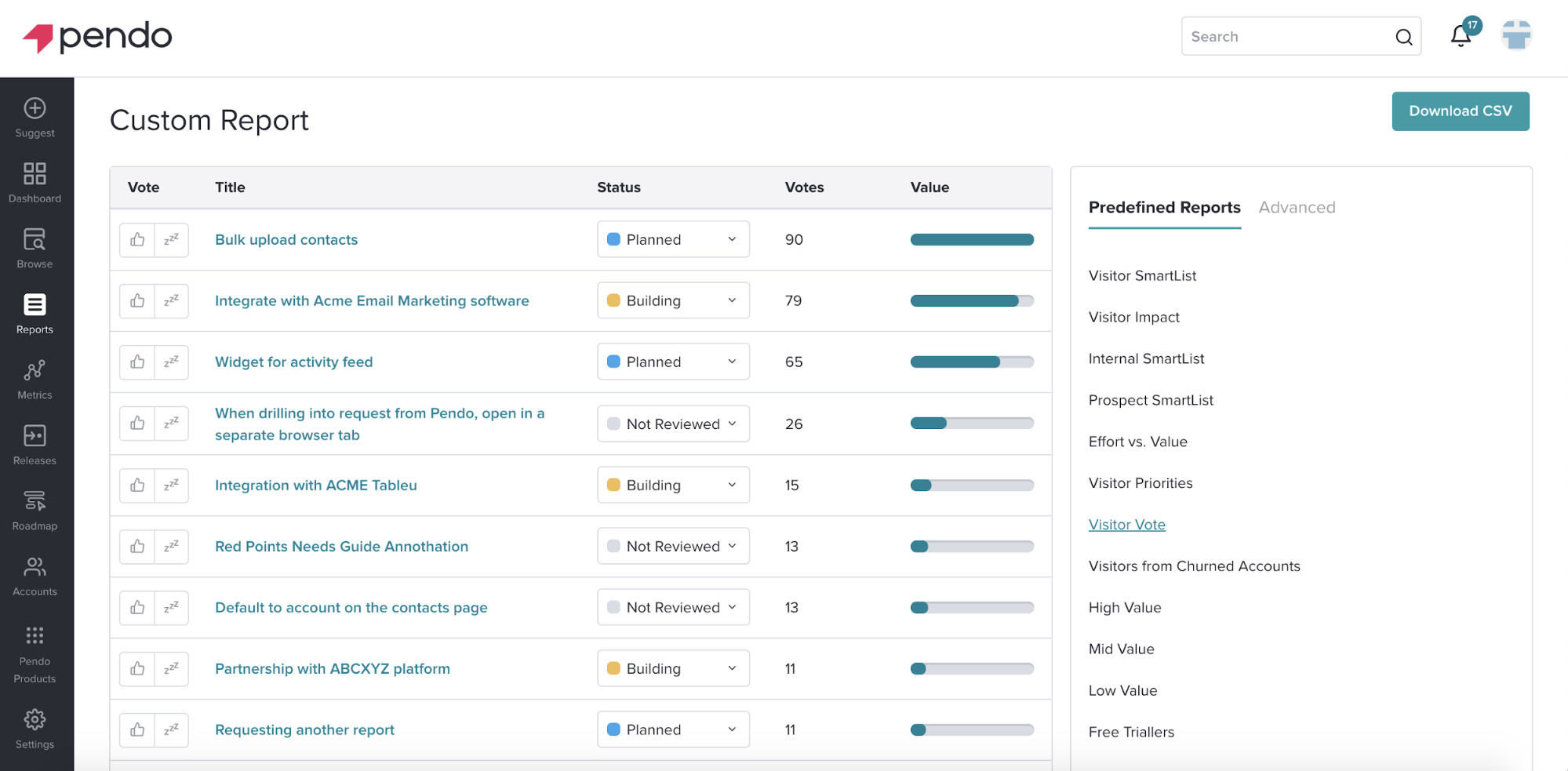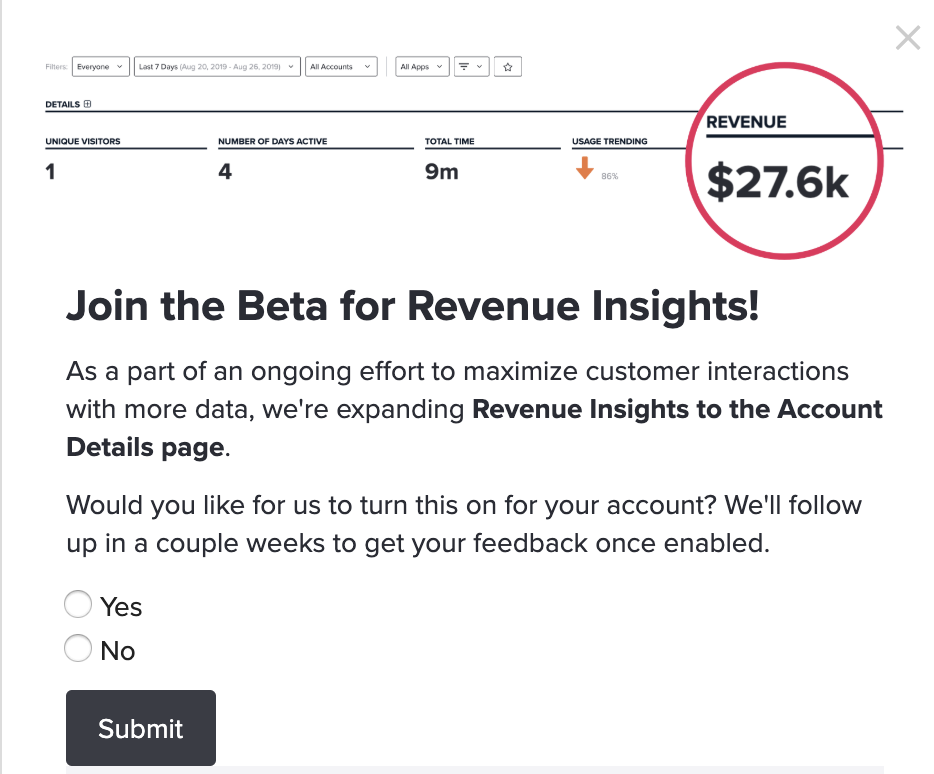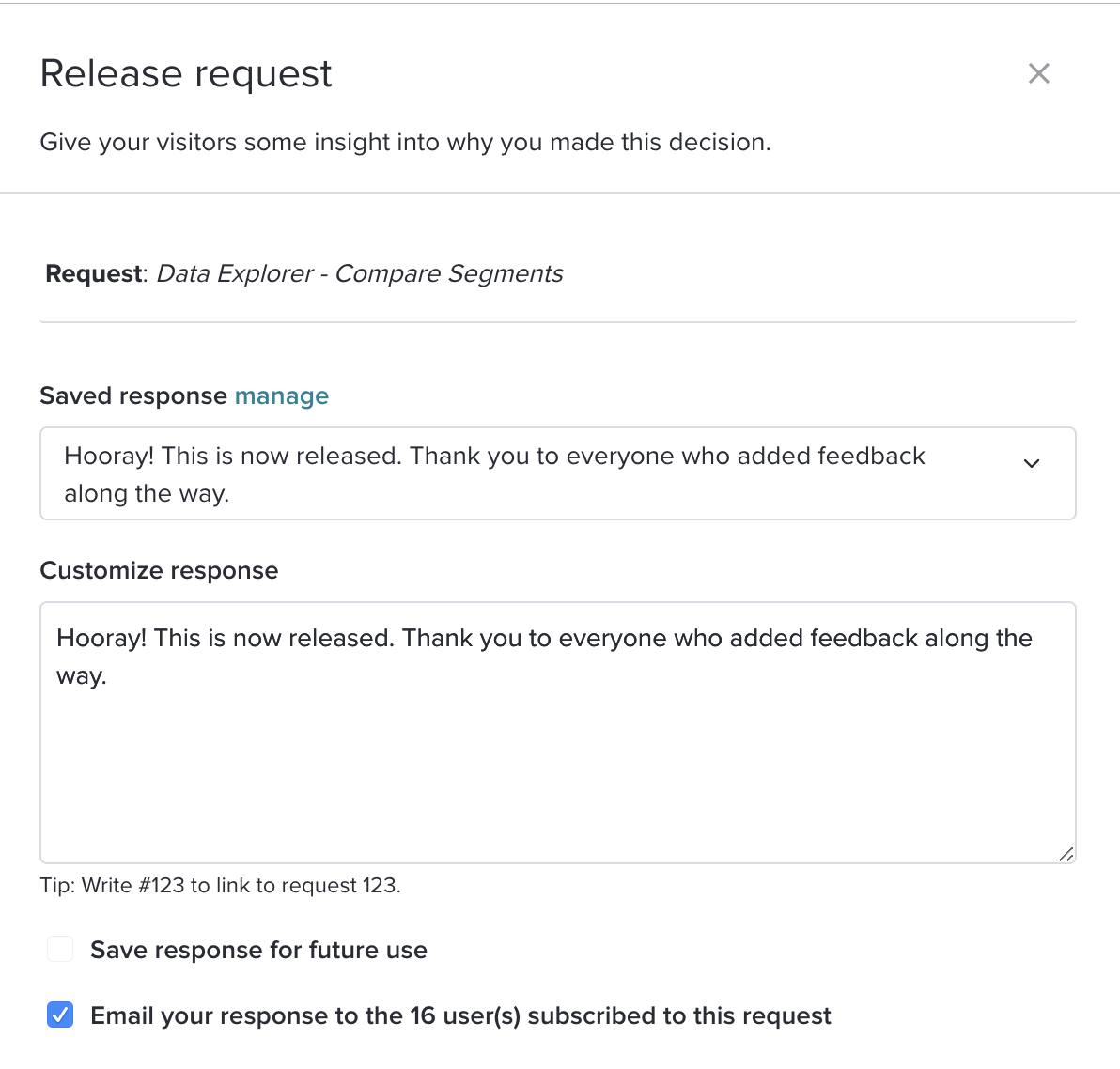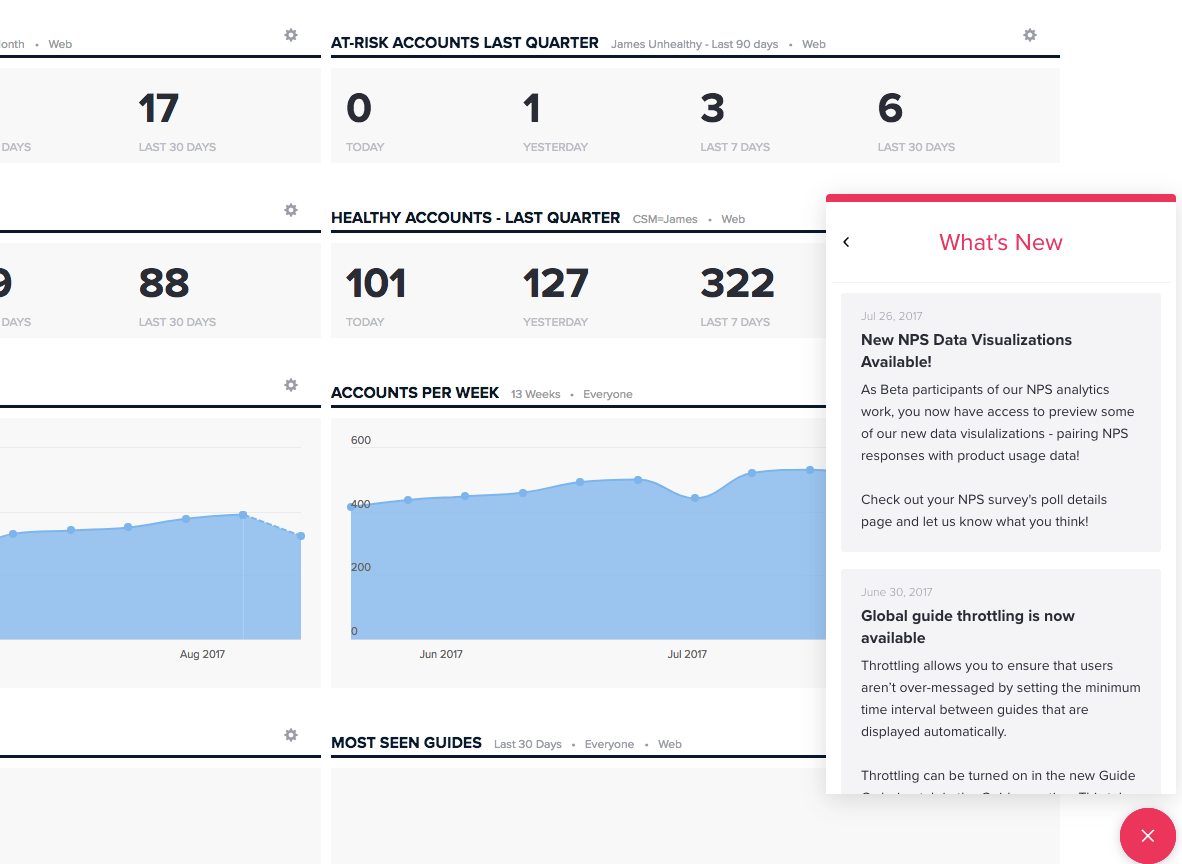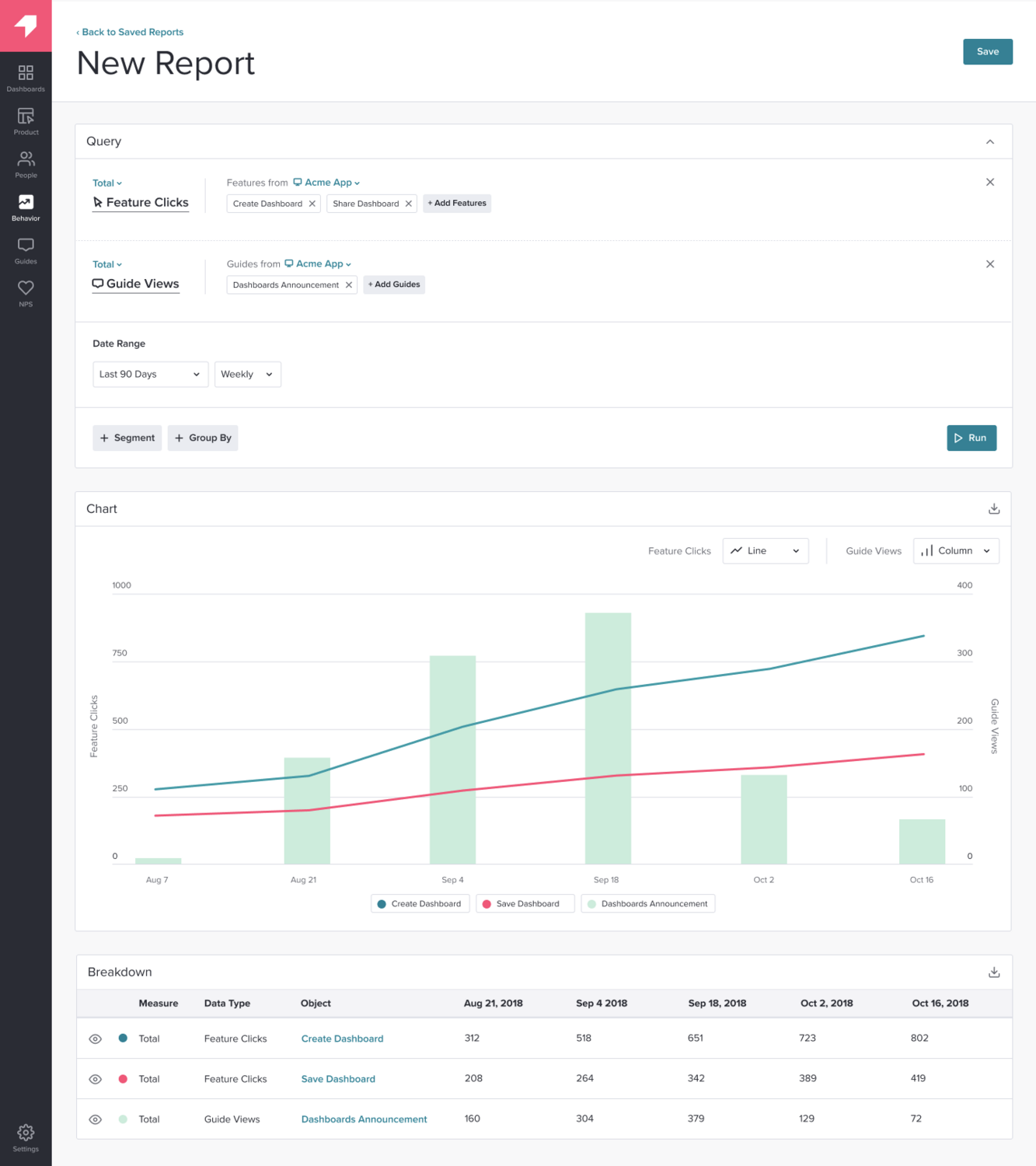At Pendo, we like to dog food our own products. It’s one of my favorite things about working here, and what actually attracted me to working at Pendo in the first place. As a product-led company, all departments coalesce around our product in order to create the best customer experience, every step of the way. And as a product manager (PM) myself, Pendo helps my team and I not only talk the talk, but walk the walk, as well.
One of the biggest challenges in product management is knowing how to prioritize what to build next. Here are four ways we’ve incorporated our newest product, Feedback, into our day-to-day on the PM team to help overcome this challenge:
1. Organizing (and prioritizing) customer requests
Even the most seasoned PM struggles with determining which features and initiatives to put on the roadmap (and where). Besides, with so many opportunities competing for restricted resources — how do you decide, let alone know which is the most pressing?
Our CEO always says that our next big innovation could come from one of our customers — so, we listen. Our product operations team organizes a bi-weekly “inputs and prioritization” meeting, where we discuss top themes from sales, customer success, and directly from our customers using our newest product, Pendo Feedback.
With Feedback, we’re able to sort and organize requests by segment, product area, priority, number of votes, and even which product requests have the highest revenue associated with them. I even have my own product request in Feedback: to be able to see a public library of dashboards across users (vote for it here if you’d like that, too!).
We might not necessarily build the exact feature every customer asks for, but by seeing all feedback in one place, we’re able to identify and discuss recurring themes within the problem statements. And, most importantly, we can ensure product decisions are pervasive to as many users as possible — while also ensuring they’re aligned with our overall vision and strategy.
2. Identifying beta candidates
Another challenge we face as product managers is identifying strong beta candidates. Our customer success team has historically been the go-between in figuring out which customers would be the best candidates to test out new functionality. And although we had product usage and NPS verbatims (from Pendo) to help us, we lacked a single repository of engaged customers that we could call on for specific discovery/research.
With Feedback, we’re able to see a list of users who have submitted and/or voted for a specific product request, or even filter by key search terms. Now, we no longer have to pester the customer success team to identify candidates for our betas. We can keep the entire experience within Pendo, and reach out to these users via in-app polls for an opt-in experience.
To take it a step further (and this is where the magic really happens), we can automatically include any user that opts in to the Closed Beta directly into our feature flag segment — thus, turning the new functionality on for that specific user without any manual effort.
3. Communicating updates and new releases
Once we have a new product idea (straight from our customers) and we’ve tested it with beta candidates that we know are interested in this type of functionality, the real fun begins: it’s time to launch the feature. Think of releasing a new feature without communicating it like the old saying, “If a tree falls in a forest and nobody is around to hear it, does it make a sound?”
Features are expensive — and it’d be a waste to spend so much time and resources planning, engineers coding, and training go-to-market teams to not have anyone use the feature you’ve just launched. What’s great about Feedback is that we can keep users up-to-date on the status of their product requests, as well as when things are released. What’s better is that we can do this without relying on a customer success manager (CSM) to keep track of everything or remember which customer wanted what (as a former CSM, I know how difficult and time consuming that is!).
Updating the status of a request in Feedback from “Building” to “Release” is so satisfying, and gives customers who requested the feature a heads up before everyone else finds out about it. Another place where we always make sure to communicate new releases is — you guessed it — inside the product.
4. Following up after a product launch
As product managers, it’s really important to us that we follow the progress of our launches. Our product ops team helps us keep track of adoption metrics, and I also like to use one of our newer insights tools, Data Explorer, to compare usage between users who requested the feature in Feedback with those who didn’t.
And trust me, if users who requested the feature aren’t using it after 30 days, you better believe I’m going to reach out and ask why (nicely, of course!).
If you want to dig deeper into Feedback, check out this webinar. And you can read more about how we use Pendo at Pendo here.
